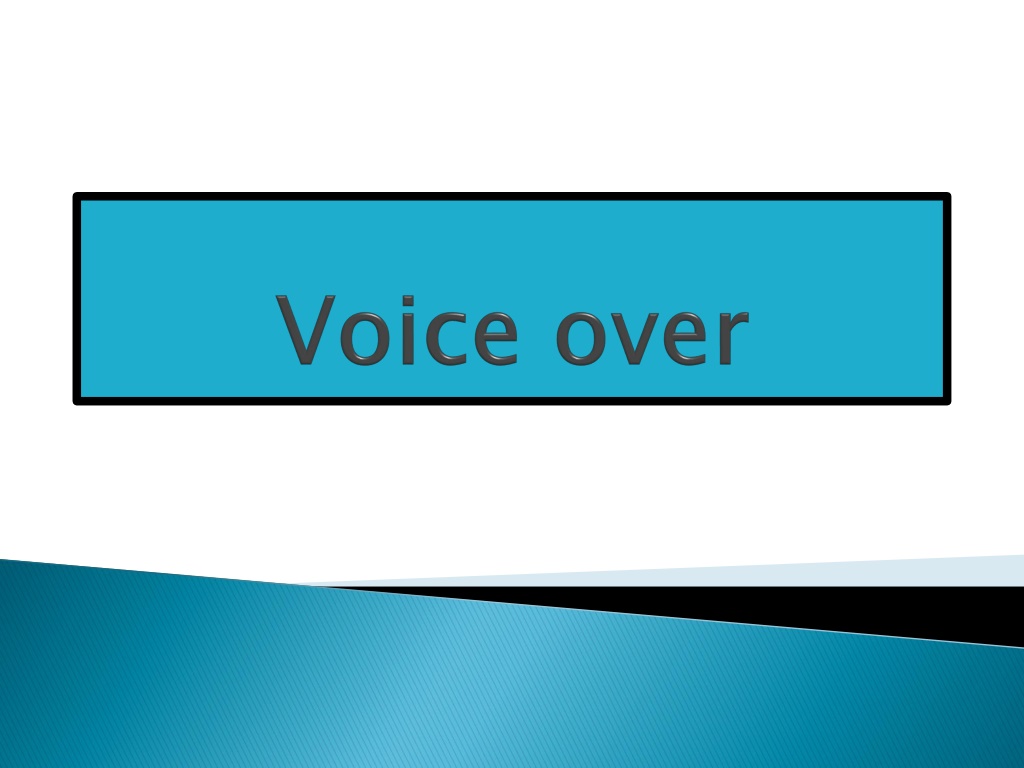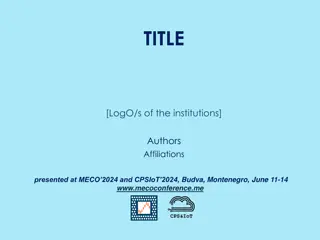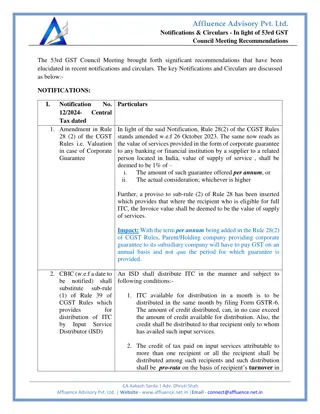
Understanding Voice Over (VO) in Audiovisual Translation
Voice Over (VO) is a widely used audiovisual transfer mode that involves translating content by overlaying a voice in the target language on top of the original source language. This technique has various applications in media content assembly and can take different forms such as VO for production and VO for post-production. Learn more about the nuances and types of Voice Over in audiovisual translation.
Uploaded on | 0 Views
Download Presentation

Please find below an Image/Link to download the presentation.
The content on the website is provided AS IS for your information and personal use only. It may not be sold, licensed, or shared on other websites without obtaining consent from the author. If you encounter any issues during the download, it is possible that the publisher has removed the file from their server.
You are allowed to download the files provided on this website for personal or commercial use, subject to the condition that they are used lawfully. All files are the property of their respective owners.
The content on the website is provided AS IS for your information and personal use only. It may not be sold, licensed, or shared on other websites without obtaining consent from the author.
E N D
Presentation Transcript
There is a third audiovisual transfer mode that has not been analyzed in such detail, but which nonetheless is extensively used in many audiovisual markets: Voice Over (VO). Sometimes termed the ugly duckling of audiovisual translation (Orero 2006), many academic and non- academic voices have drawn attention to the limitations of voice over (Garcarz 2007), and have accounted for the fact that it continues to be used in some countries in terms of the low costs that it incurs. However, voice over is a reality accepted by many audiences, and its academic study has increasingly captured the attention of translation scholars.
It is a technique in which a voice offering a translation in a given target language (TL) is heard simultaneously on top of the source language (SL) voice (D az Cintas and Orero, 2006: P. 477).
Kuhn and Westwell (2012: P. 446447) define VO quite differently, as the voice of an off-screen narrator or a voice heard but not belonging to any character actually talking on screen
Orero (2004) and Franco et al. (2010) examine how VO fits within the process of media content assembly and distinguish the following types: 1. VO audiovisual content that have not yet been converted into a full programme. The translator is often sent excerpts of audiovisual content (for instance, interviews), generally without a script or transcript, and has to deliver a written translation. Then, the excerpts are shaped into a full programme, and the relevant translation segments are voiced. VO for production for production: they are given excerpts of
2. VO fully-fledged audiovisual programme. It is a finished product (for instance, a documentary), generally with a post-production script, is provided to the translator, who delivers a written document that will be used for the final recording in the target language. VO for post for post- -production production: they are given a
3. The direct VO use first- person VO, meaning that the translation uses the same pronoun as the speakers in the original programme. For instance, if the speaker says I think . . . , the translation will keep the first person in the target language, making the translator more invisible. The direct VO: the standard practice is to
4. The Reported VO more visible as the words of the speaker are reported in the third person. Examples of third- person voice-over have been provided by Franco (2000: 238), who examines German versions of Brazilian documentaries in which the interviewees answers are frequently converted into indirect speech. The Reported VO: the role of the mediator is
The presence of a translating voice overlaps with a translated voice. It is worth mentioning that VO involves the observance of various types of synchronies. Inspired by existing classifications in dubbing (Chaume 2004), Orero (2006) and Franco et al. (2010) differentiate four types of synchronies:
1. effect that the length of the original speech has on that of the translated text given that the translation usually begins some words after the original utterance and finishes some words before the latter ends. This words at the onset and at the end of each VO arguably enhance target language audience feel that the they listen to is credible. VO isochrony designates the constraining This allows the original allows the original words at the onset and at the end of each VO utterance to be heard, in an attempt to arguably enhance authenticity and make the target language audience feel that the content they listen to is credible. utterance to be heard, in an attempt to authenticity and make the content
For Example: In fictional genres with fast-paced dialogues, reaching VO isochrony is not possible, and the original and the translation may finish approximately at the same time. According to (Sepielak, 2016), there are different types of Isochronies: A. Full at the beginning and at the end of the utterance. B. Initial audible only at the beginning. C. Final only at the end of the utterance. Full isochrony isochrony : when at least one word is heard Initial isochrony isochrony: where at least one word is Final isochrony isochrony: where at least one word is heard
2. Literal synchrony is used by authors such as Luyken et al. (1991: P.141), who favor literal translation when the original voice is heard without any overlapping from the voice providing the translation.
3. Kinetic synchrony refers to translations that are synchronized with the body language of the characters on screen. This means that when a linguistic expression is linked to a certain gesture made by one of the characters, the translation should match this gesture to avoid inconsistencies between the verbal and the visual. For example Former US President Trump gesture (finger crossing) into Arabic language.
4. Action synchrony involves the synchronization of the translation with the images on screen. The order of the elements in a sentence may differ in the original and in the translation, whether because of systemic differences between languages or because of the rephrasing that VO isochrony often entails. Still, words should be synchronized with the visuals they correspond to, thus avoiding a mismatch between what the translation states and what audiences see on screen.
THANK YOU






















